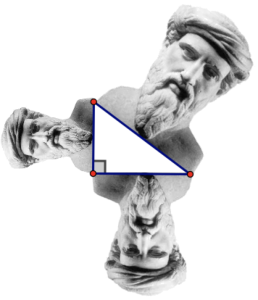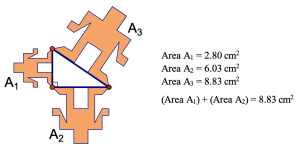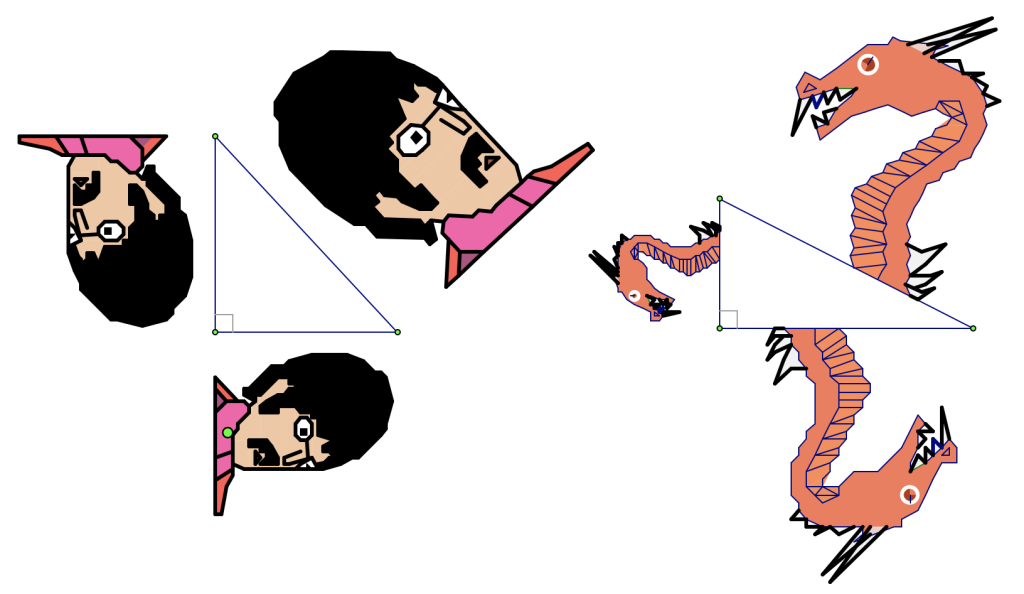In geometry, we learn that if we erect squares on the legs of a right triangle, the sum of their areas is equal to the area of the square on the triangle’s hypotenuse. This is visual way to conceptualize the Pythagorean Theorem. But now consider the image below that shows a bust of Pythagoras, scaled to fit on the three sides of the right triangle. How does the sum of the areas of the two smaller busts compare to the area of the bust on the triangle’s hypotenuse? Once again, as a generalization of the Pythagorean theorem, the two quantities are equal!
In her book Geometry Activities for Middle School Students with The Geometer’s Sketchpad, Karen Wyatt offers a neat way for students to draw their own scaled designs on the three sides of a right triangle.
Using Sketchpad’s custom tool feature, students can create their own designs to place on the three sides of a right triangle and then measure their areas. The picture below shows a simple example with three robots, all identical and scaled appropriately to fit on the triangle’s sides. Notice that the sum of the areas of the two smaller robots is equal to the area of the robot sitting on the triangle’s hypotenuse.
Here are some examples of student work below that put my simple robot to shame. In these cases, students measure the area of just a portion of their picture—for example, John Lennon’s hair or the dragon’s body.
Download the Sketchpad file below and watch this YouTube video to get started using this activity with your class. A beta version of Mac Sketchpad, designed for the latest Apple Silicon chips, is here.


